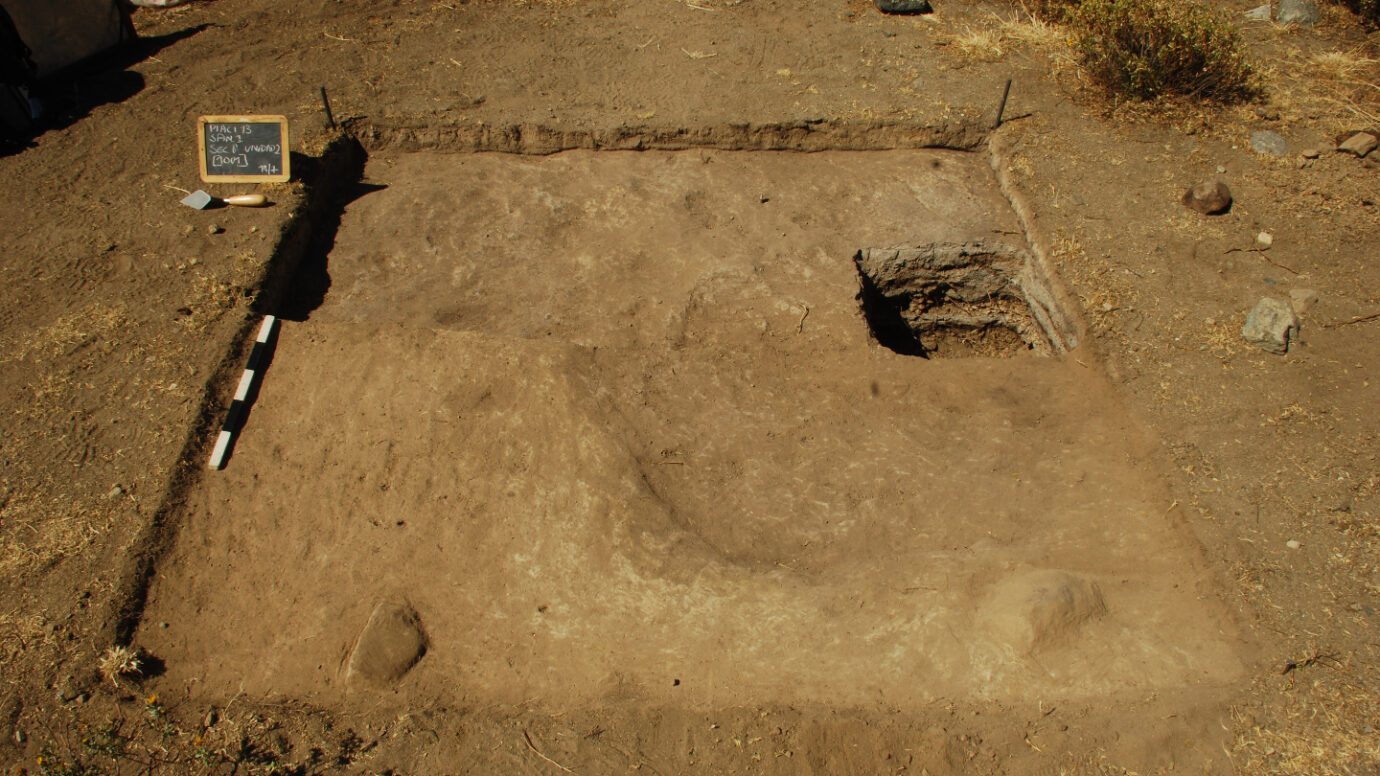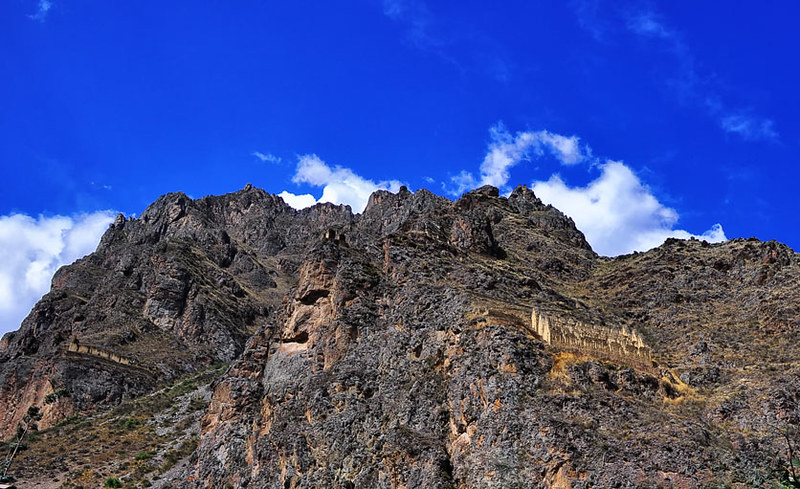Latin America
Related: About this forumPre-Incan Dancefloor That Sounded Like Thunder Was Used For Worshiping Lightning God

Abstract
The past is silent, or mostly so, yet sound can open a window to this same past. Early Spanish colonial ethnohistoric sources from the Andes are littered with references to indigenous dancing and music as an accompaniment to ritual and feasts. Recent archaeological research in the upper Ica Drainage on the late Prehispanic (CE 1000–1532) site of Viejo Sangayaico has revealed an open-air platform potentially prepared as a type of sprung or ‘sounding’ dancefloor which produces a deep percussion-like sound when stepped upon. I interpret this feature as a sounding platform for stomp dancing. The larger site’s association to veneration of Andean lightning and thunder deity suggests that dancing at this location might have been in part attuned to this supernatural entity. Wider ethnohistoric evidence provide a potential parallel into understanding what type of activities were practiced on this platform and site.
Introduction
If the past is a foreign country (Lowenthal, 1985), then it’s sounds and rhythms are distinctly muted, coming to us mostly through later derivative music and the odd archaeological relic of a musical instrument or object. In some cases, these finds reveal a hidden scale and thereby lost repertoire of sound (Aguirre-Fernández et al., 2020, Herrera et al., 2014, Kolar et al., 2012). Yet, for the most part, the past is silent. That said, the importance of sound and soundscapes in the Andes has long been recognized (Moore, 2005) and gaining an insight into this aspect of the past is potentially enriching. Andean ethnohistoric records attest to the importance of sound, music and dance for all manner of ritual purposes, including the numerous provincial and imperial yearly festivals (Guaman Poma de Ayala, 1993, pp. 239–240, see also Fig. 1), funerals (Cobo, 1990, p. 250) as well as when preparing for, and just prior to, battle (Cobo, 1990, p. 245), actually music and dance pervaded multiple aspects of Andean life (Olsen, 2002).
Here I study a unique type of musical ‘instrument’, one which in turn helped reproduce a wider soundscape with its religious and animistic overtones. In this regard, we have here a specially prepared percussion surface, in essence a type of sprung or ‘sounding’ dancefloor, composed of different types of soil, ash, and camelid guano to create a floor surface able to shock absorb, while also generate a deep acoustic drum-like sound when people stepped, or rather, stomped on it. In effect, recreating a large drum on the ground surface.
Located at 3,600 m in the upper Ica drainage within the site of Viejo Sangayaico (SAN 1), this Prehispanic dancefloor dates to the Late Intermediate Period (CE 1000–1400), with its use extended into the Inca imperial period (CE 1400–1532) and possible early Spanish colony (CE 1532–1615) before the site was wholly abandoned and its inhabitants moved to the present town of Sangayaico lower down. Analyzing the archaeological evidence from the site (Chauca Iparraguirre and Lane, 2015, Huaman Oros and Lane, 2014, Lane et al., 2019), we posit that given the possible ritual association of Viejo Sangayaico that this sounding dancefloor was employed in the veneration of local deities. In particular, water worship associated to an Andean thunder and lightning entity, in turn linked to regional tutelar deities establishing ties between different ethnic groups. In this case the local Chocorvos and the regional Chanka ethnic groups.
This article introduces the site of Viejo Sangayaico and analyses the construction of the ‘sounding’ dancefloor before contextifying it’s use within the ethnohistoric and archaeological evidence from the region and elsewhere, providing insights into how this dancefloor might have been employed and for what purpose it was built. Following, I reflect on the power inherent to sound and dance in the invocation and veneration of the sacred in the Andes.
Section snippets
The site of Viejo Sangayaico (SAN 1)
At the period in question here, the upper Ica Drainage was home to the Chocorvos or Chokurpu, (also known as the Chocoruo, Chocorbo o Chucurpu, Rowe, 1946, p. 188), an ethnic group with ties to the south-central highland Chancas, with whom they apparently formed an alliance (Bueno 2003:43–44). The Chocorvos were a highland, Late Intermediate Period (LIP) ethnic group; the Late Intermediate Period (CE 1000–1400) in the highlands was characterized by loosely bounded, weakly centralized ethnic...
More:
https://www.sciencedirect.com/science/article/abs/pii/S0278416523000314
https://www.youtube.com/shorts/XzPczjlkJ-A
Found a contemporary dance from the same area, have no idea if any of it could have been passed down from ancient times with modifications, of course, and costume changes, but there is a heck of a lot of stomping going on!
Judi Lynn
(162,384 posts)Like Riverdance but with worse weather.
BEN TAUB
Freelance Writer

An excavated section of a platform (pictured) at a pre-Inca site in Peru provided clues to how this surface may have amplified the sounds of stomping dancers, probably as they ritually honored their thunder god.
PIACI/ORP PROJECT
By Bruce Bower
AUGUST 22, 2023 AT 7:00 AM
Roughly a century before the Inca empire came to power in A.D. 1400, blasts of human-produced thunder may have rumbled off a ridge high in the Andes Mountains.
New evidence indicates that people who lived there around 700 years ago stomped rhythmically on a special dance floor that amplified their pounding into a thunderous boom as they worshipped a thunder god.
Excavations at a high-altitude site in Peru called Viejo Sangayaico have revealed how members of a regional farming and herding group, the Chocorvos, constructed this reverberating platform, says archaeologist Kevin Lane of the University of Buenos Aires. Different layers of soil, ash and guano created a floor that absorbed shocks while emitting resonant sounds when people stomped on it. This ceremonial surface worked like a large drum that groups of 20 to 25 people could have played with their feet, Lane reports in the September Journal of Anthropological Archaeology.
These findings, from a ridgetop ritual area that faces a nearby mountain peak, provide a rare glimpse of the role played by sound and dance in ancient societies (SN: 11/18/10).
While working at Viejo Sangayaico in 2014, Lane’s team first noticed that one of two open-air platforms located in a ritual area sounded hollow when people walked on it.
A later excavation of part of the platform uncovered six sediment deposits consisting of various mixes of silty clay, sand, ash and other materials. Ashy layers within a section of guano from animals such as llamas and alpacas included small cavities that helped to generate drumlike sounds from the platform’s surface, Lane says.
His team acoustically tested the platform by stomping on it one at a time and in groups of two to four while measuring the noise produced. The same was done while a circle of four people stomp-danced across the platform.
More:
https://www.sciencenews.org/article/inca-stomped-salutes-thunder-god-dance-floor
Judi Lynn
(162,384 posts)By
Nisha Zahid
August 23, 2023

Pre-Inca people danced on a unique platform in the Andes Mountains to worship their thunder God. Credit: Rod Waddington / Flickr / CC BY-SA 2.0
Archaeologists discovered a fascinating occurrence in the Andes Mountains around seven hundred years ago long before the Inca Empire rose to prominence in 1400 A.D. New evidence suggests pre-Inca peoples produced human thunder on a ridge in the mountains.
Those who lived there, part of a group called the Chocorvos, created a unique platform on this high ridge in Peru, known as Viejo Sangayaico about a century prior to the establishment of the Inca Empire. They weren’t merely dancing, however; they were worshipping a thunder god.
Study of the pre-Inca dance site
Archaeologist Kevin Lane from the University of Buenos Aires has been studying this pre-Inca site. He found something quite intriguing. The floor these people made was like no other.
It was made of layers of different materials including soil, ash, and guano (which is bird droppings). These layers combined to form a floor that could take the pounding of people’s feet. When the floor was stomped on, it didn’t just absorb the impacts but made booming sounds much like thunder.
Think of it as a massive drum composed of the ground itself. A group of around twenty to twenty-five people could play this natural drum with their feet. It’s as if they were creating thunderous music while worshipping their thunder god.
More:
https://greekreporter.com/2023/08/23/pre-inca-people-stomped-salutes-thunder-god/
Wicked Blue
(6,655 posts)on their dancing floors. I hope archaeologists will revisit sites around the world to find out whether they also have sound-making properties.